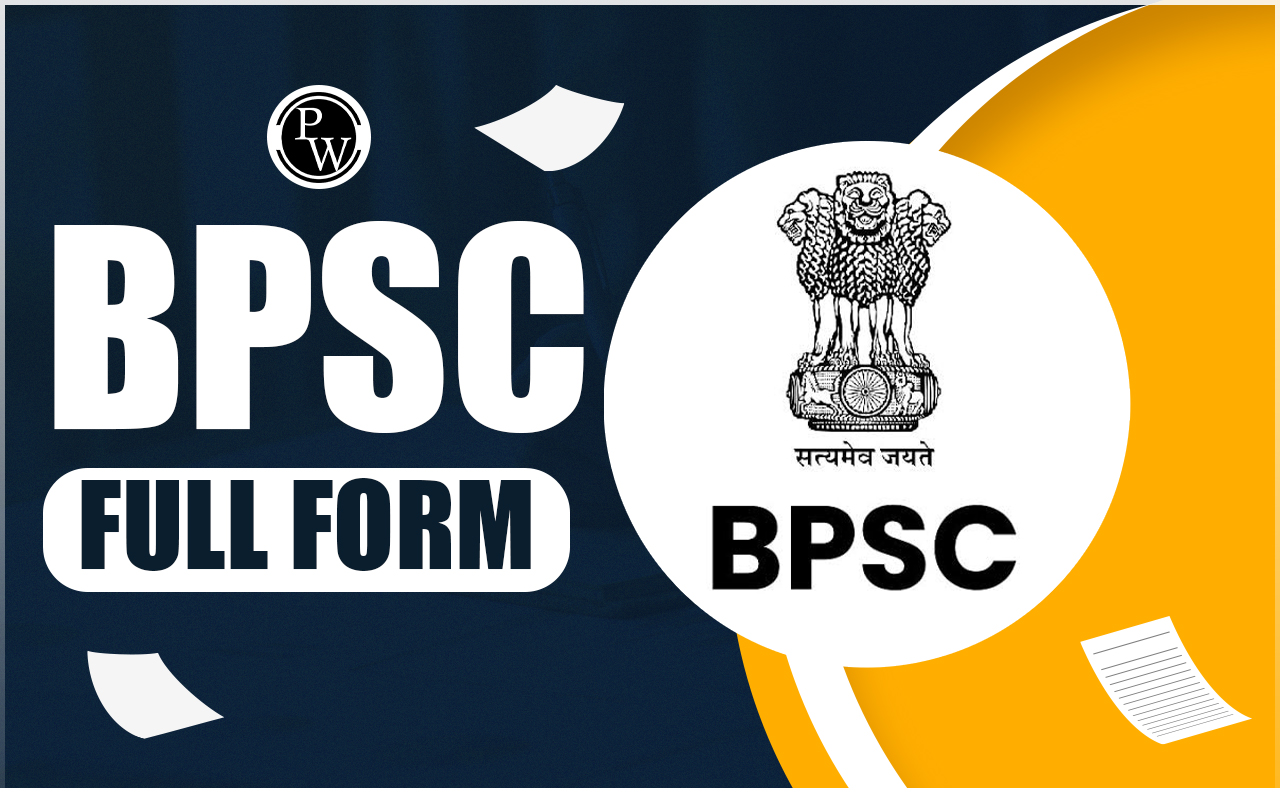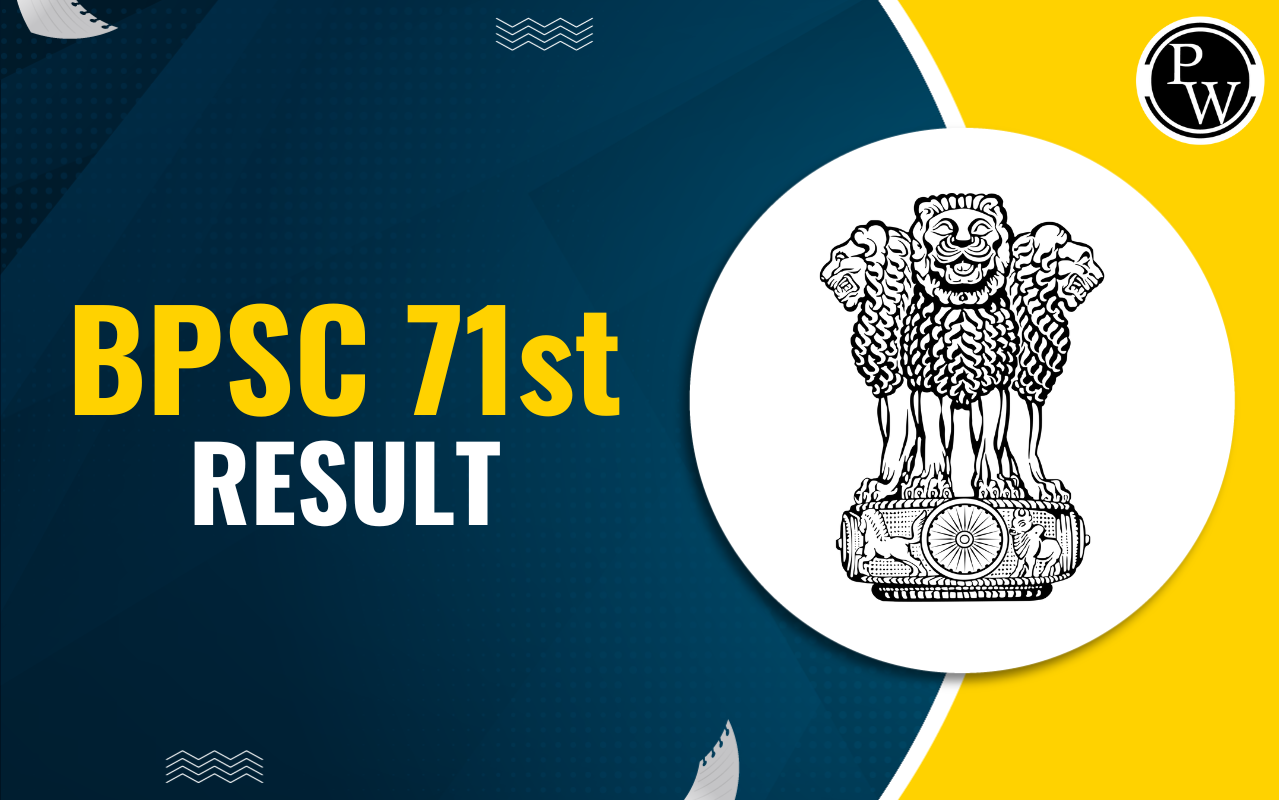
BPSC Physics Syllabus 2025: The Bihar Public Service Commission has released the BPSC Physics Syllabus 2025 for the candidates to prepare for the upcoming examination. The candidates who are going to appear in the BPSC 71st can go through the BPSC Syllabus 2025 for Physics. To meet the recruitment authority's cutoff, they must carefully review the syllabus and study.
The preliminary exam, major exam, and interview are all part of the BPSC 2025 Selection Process. Candidates can find information on the section-by-section syllabus, the exam format, and preparation advice in this post.BPSC Physics Syllabus 2025
The Bihar Public Service Commission has announced the BPSC Physics Syllabus 2025. Each year, hundreds of applicants take the BPSC exam in hopes of being hired by the Bihar state government. General Hindi, General Studies 1 & 2, and Optional Subject are all covered in the syllabus. Each paper will last three hours, and the exam will be given for a total of 1000 marks. Sections I and II comprise the preliminary exam for the BPSC Physics 2025. In order to properly prepare a study plan, students should read through this page to obtain details about the BPSC Syllabus 2025 and exam pattern.BPSC Physics Syllabus 2025 Overview
The BPSC Physics Syllabus for Sections I and II is available for review by candidates in the table below. The majority of the syllabus is devoted to general studies, covering subjects like onservation Laws in mechanics. Impact characteristics, scattering cross-section, and collisions. Center of mass and laboratory systems involving physical quantity transformations, Scattering by Rutherford. rocket motion in a continuous force field. Coriolis force, rotating frames of reference, etc.Here is an overview of the BPSC Physics syllabus for 2025 in a table format to help candidates get a clear and concise understanding of the key topics and their scope:
|
BPSC Physics Syllabus 2025 Overview |
|
|---|---|
|
Section |
Key Topics Covered |
|
Mechanics |
Conservation laws, collisions, center of mass, motion of rigid bodies, angular momentum, rocket motion, gyroscope, Kepler’s laws, fluid dynamics, special relativity |
|
Thermal Physics |
Laws of thermodynamics, Carnot cycle, Maxwell’s relations, kinetic theory, black body radiation, specific heat, stellar spectra, refrigeration concepts |
|
Waves and Oscillations |
Simple harmonic motion, stationary and traveling waves, interference, diffraction, polarization, laser sources, holography |
|
Electromagnetism |
Coulomb’s law, Gauss’s law, electric and magnetic fields, electromagnetic induction, circuits, Maxwell’s equations, magnetic properties |
|
Modern Physics |
Bohr’s atom, electron spin, spectral lines, Pauli principle, Raman effect, photoelectric effect, Schrodinger equation, nuclear physics, particle accelerators |
|
Electronics |
Band theory, semiconductors, diodes, transistors, solar cells, logic gates, television receivers |
BPSC Physics Syllabus 2025 Section I
The table below contains the information for Section I of the BPSC Physics Syllabus. The subjects and subtopics covered in this article will help applicants prepare well for the next test.| BPSC Physics Syllabus | |
| Topics | Sub-Topics |
| Section I | 1. Conservation Laws in mechanics. Impact characteristics, scattering cross-section, and collisions. Center of mass and laboratory systems involving physical quantity transformations, Scattering by Rutherford. rocket motion in a continuous force field. Coriolis force, rotating frames of reference, Rigid body motion, angular momentum, Gyroscope: torque and precession of a top. central power Kepler's Laws, motion under inverse square law, and satellite motion (including geostationary). Special Theory of Relativity, Galilean Relativity, The Lorentz-Michelson-Morley Experiment Transformation: Bernoulli's Equation with basic applications; Fluid dynamics; streamlines and turbulence; addition theorem of velocities; variation of mass with velocity; and mass energy equivalency. |
| 2. Thermodynamic potentials, Carnot's cycle, isothermal and adiabatic changes, and the laws of thermodynamics are covered in thermal physics. Maxwell's connections. The Joule-Kelvin effect, the Clausius-Clapeyron equation reversible cell, etc. fan Boltzmann's Law, Maxwell's Distribution Law of Velocity, Kinetic Theory of Gases, Equipartition of Energy, certain gas temperatures Brownian motion and mean free path. Black body radiation and solids' specific heat according to the ideas of Einstein and Debye Solar constant, Planck's Law, and Wien's Law. Stellar spectra and thermal imaging. Adiabatic remuneration, deduction refrigeration, and the idea of negative temperature are used to produce law temperatures. | |
| 3. Oscillations and Waves. oscillations, Damped harmonic motion, forced oscillation, resonance, simple harmonic motion, and stationary and traveling waves. harmonic solutions, wave equation, both spherical and plane waves, Wave superposition, phase, group velocity, and beats. Huygen's Interference Principle. Fraunhofer and Diffraction Fresnel. Straight edge diffraction, slitting (single and multiple), grating resolution, and optical instruments. The Rayleigh Standard. Production, detection, and polarization of light (elliptical, circular, and linear). laser sources (semiconductor diode, ruby, and lithium-neon) Fourier transformation in the context of spatial and temporal coherence diffraction. Holography: theory and applications; Fresnel and Fraunhofer diffraction by rectangular and circular apertures. | |
BPSC Physics Syllabus 2025 Section II
The table below contains the information for Section II of the BPSC Physics Syllabus. The subjects and subtopics covered in this article will help applicants prepare well for the next test.| BPSC Physics Syllabus Section II | |
| Topics | Sub-Topics |
| Section 2 | The Law of Columb Electric field. Gaussian law, Poisson and Laplace equations for electric-potential in a homogeneous dielectric, point charge, infinite conducting plane, and uncharged conducting sphere in uniform field. Shell Magnetism Field intensity and magnetic induction. Application and law of Biot-Savart. Self and mutual inductances; Faraday's and Leae's laws; electromagnetic induction. currents that alternate. L.C.R. circuits: quality factor, series and parallel resonance circuits. Kirchoff's laws in practical use. electromagnetic radiation and Maxwell's equations, Poynting vector and the transverse character of electromagnetic waves. Dia para, ferro antiferro, and ferri magnetism are examples of magnetic fields in matter (qualitative approach only). |
| 2. Bohr's theory of the hydrogen atom in modern physics. Spin of electrons, optical, and X-ray Species. Gerlach's experiment and spatial quantization by Stern. Spectral terms, fine structure of spectral fines, vector model of the atom. Paull's exclusion principle, J-J and L.S coupling Zeeman effect, and spectral term of two equivalent and nonequivalent electrons. Both the fine and gross electronic band structure Species. Raman phenomenon. impact of photoelectric light. De Broglie waves, Compton effect. The principle of uncertainty and wave particle duality. Schrodinger wave equation: one dimensional harmonic oscillator eigenvalues and eigenfunctions with applications to (i) particles in a box and (ii) motion across a step potential. Principle of Uncertainty Radioactivity, radiation from alpha, beta, and gamma rays. Alpha decay theory in elementary terms. nuclear energy that binds. Semi-empirical mass formula and mass spectroscopy. Fusion and fission of nuclei. Basic Physics of Reactors. | |
| 3. Electronics: Band theory of semiconductors, insulators, and conductors in solid state. P.N. junction semiconductors both intrinsic and extrinsic, Thermistor, reverse and forward biased Zenner diodes P. N Junction, Solar cell uses transistors and diodes for r.f. wave detection, rectification, amplification, oscillation, and modulation. TV logic gates and transistor receivers. | |
BPSC Physics Exam Pattern 2025
The BPSC Physics Exam Pattern 2025 is available for candidates to review, and it contains information about the format of the test, the amount of questions, the marking scheme for each subject, and how long it will take. General Hindi is a qualifying exam included in the BPSC Physics Prelims Exam. The 900 marks in the mains are broken down into three categories: general studies, general Hindi, and an optional paper.| BPSC Physics Exam Pattern 2025 | ||
| Subject | Total Marks | Time |
| General Hindi (Prelims) | 100 | 3 Hours |
| General Studies 1 | 300 | 3 Hours |
| General Studies 2 | 300 | 3 Hours |
| Optional Subject | 300 | 3 Hours |
| Total | 1000 | 3 Hours/Paper |
BPSC Physics Preparation Tips
The candidates can go through the BPSC Physics Preparation Tips which have been mentioned below. They can include these tips in their preparation strategies to prepare effectively for the upcoming BPSC Exam 2025.- Recognize the exam format and syllabus before anything else. For the best chance of receiving the most points, cover every subject listed in the syllabus. To ace the test, arm yourself with the greatest literature and reference materials.
- Make it a habit to write more quickly on the Physics test. The applicants must write more quickly since they must provide lengthy responses that they must demonstrate with the aid of charts, diagrams, and pictures.
- The candidates should thoroughly complete all of the charts and diagrams because they improve the answer's readability and presentability and make it easier to understand. When needed, diagrams must be included in the exam.
- Use previous year's question papers as a practice to improve your speed and lessen your exam anxiety.
| Other Related Links of BPSC Exam 2025 | |
| BPSC Notification | BPSC Salary |
| BPSC Selection Process | BPSC Syllabus |
| BPSC Previous Year Question Paper | BPSC Eligibility Criteria |
| BPSC Cut Off | |









